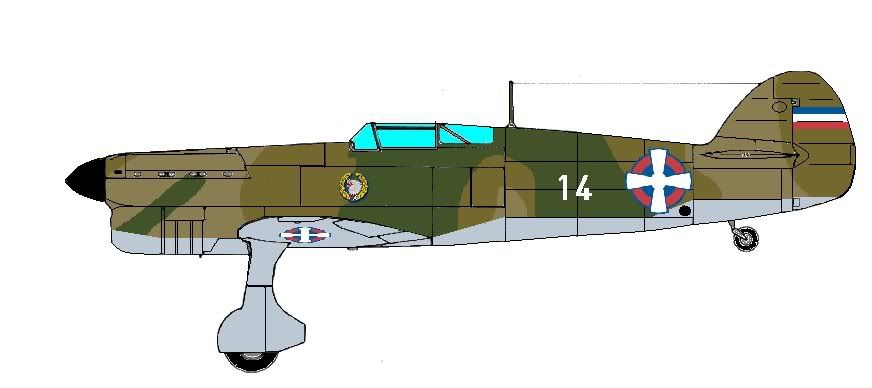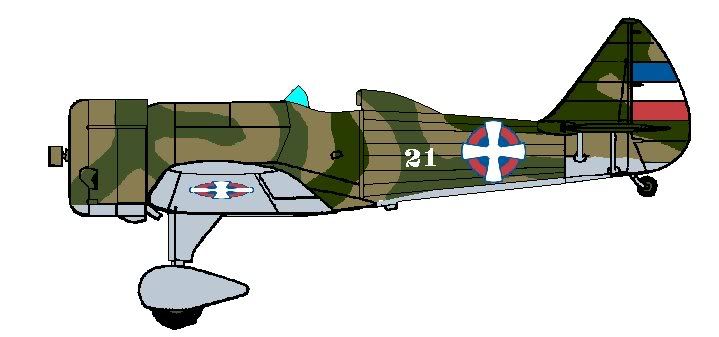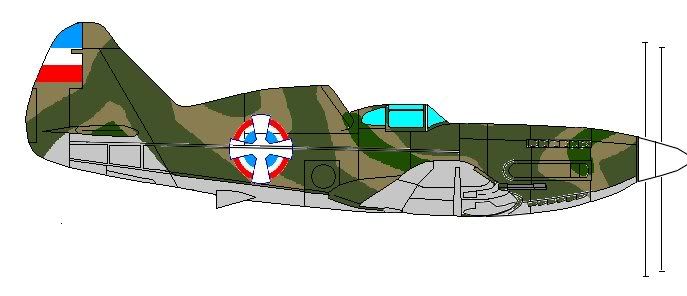Dear visitor, welcome to WesWorld.
If this is your first visit here, please read the Help. It explains in detail how this page works.
To use all features of this page, you should consider registering.
Please use the registration form, to register here or read more information about the registration process.
If you are already registered, please login here.
Just for fun
A product improved AVIA B.35

A Heavy Fighter/CAS

You know that the Avia B.35 was later made into the
Avia B.135, correct?
Yes but my drawing is based on the B.35 that had fixed landing gear hence a product improved B.35 and not B.135

This post has been edited 1 times, last edit by "Vukovlad" (Apr 7th 2008, 3:17am)
IAR 15

And of course the WW Coldwar c.1975


Feeling threatened by the new FIAT fighters Yugoslavia turned to France for SE-580s

Pre-Jet French aircraft wasnt known for their beauty, here are some pics


This post has been edited 1 times, last edit by "Vukovlad" (Apr 11th 2008, 3:50am)
Originally posted by Brockpaine
...what an ugly kite!
Its not ugly, its a crime against nature.
There are some serious large French aircraft engines from this period, most being 4 or 6 bank radials with 7 cylinders per row. They're very large, gave reasonable power but at huge size.
Played a bit with it



A 5-view drawing by Jemiba. You've got to wonder what they were thinking by incorporating that hump.
Is that for a supercharger? or Cooling?
It's most likely a concern about not getting enough cooling air that caused that hump. There were a lot of pre-WWII aircraft that had large (in comparison to the size of their engines) radiator-cooling inlets, the P-40 is a prime example but there are plenty of others.
Its the air intake for the radiator. This is a post-WWII aircraft though, so radiator design should have moved on a fair bit.
The supercharger (two individual ones) intakes are mounted either side of the engine cowling.
Radiator design in the wartime countries probably had moved on, but how much high performance fighter design work had been done by the French team? If you put the radiator underneath the aircraft, there's some resemblance to the XP-47H in size at least (and the Chrysler IV-2220-11 was a smaller engine than that beast looks to be).
Originally posted by Red Admiral
Its the air intake for the radiator. This is a post-WWII aircraft though, so radiator design should have moved on a fair bit.
The supercharger (two individual ones) intakes are mounted either side of the engine cowling.
The design was made during the war IIRC
Two prototypes were ordered in 1944 but cancelled at the end of 1947. The engine itself is based on the Jumo 213.
The mounting of the radiator in that position seems to be to protect it from ground fire. A couple of designs for the RAF did similar things with internal radiators, underneath intake and exhaust through the top.
Wasnt only the VB-10s engine based on Jumo, the original SE-580 engine were coupled HS engines
I'd hate to try to bail out with that hump behind the cockpit. "YAaaaah I'm going down, jump for-" *SSSLLLUUURRRP!*
The VB-10 had 860hp Hispano-Suiza 12Y engines with 1150hp 12Z engines on the second prototype. The follow-on VB-15 had Arsenal 12H engines, which were modified Jumo 213A engines. The Hispano-Suiza 24H engine used on the SE-580 was derived from the Ju213, using the same cylinder banks IIRC
